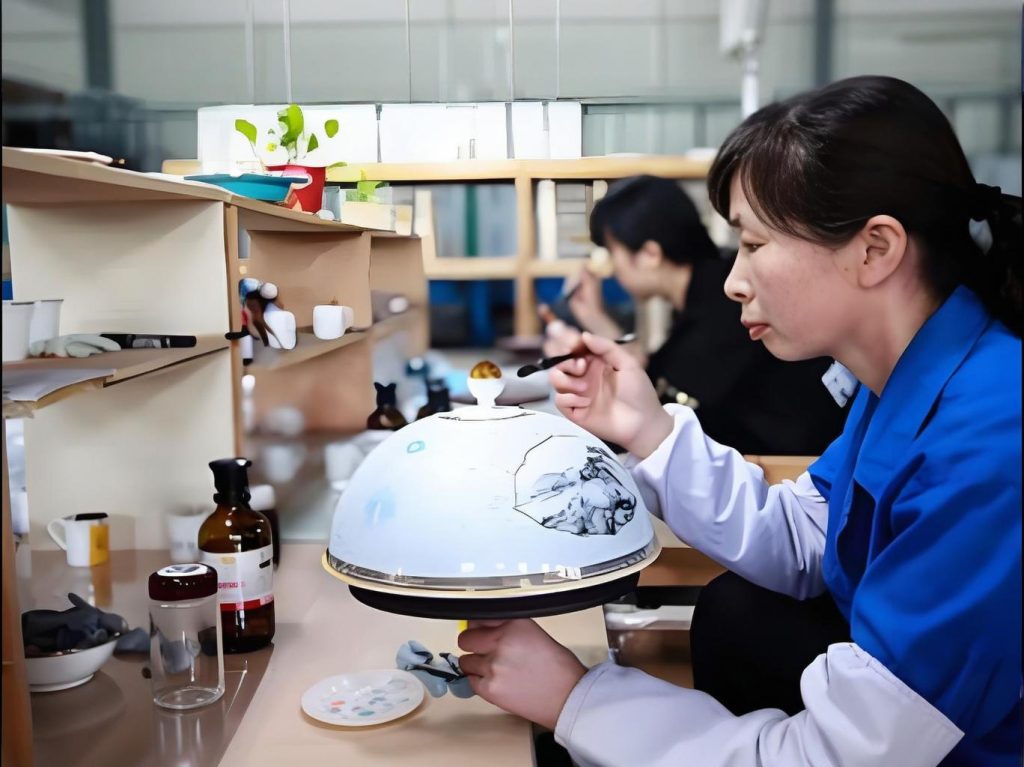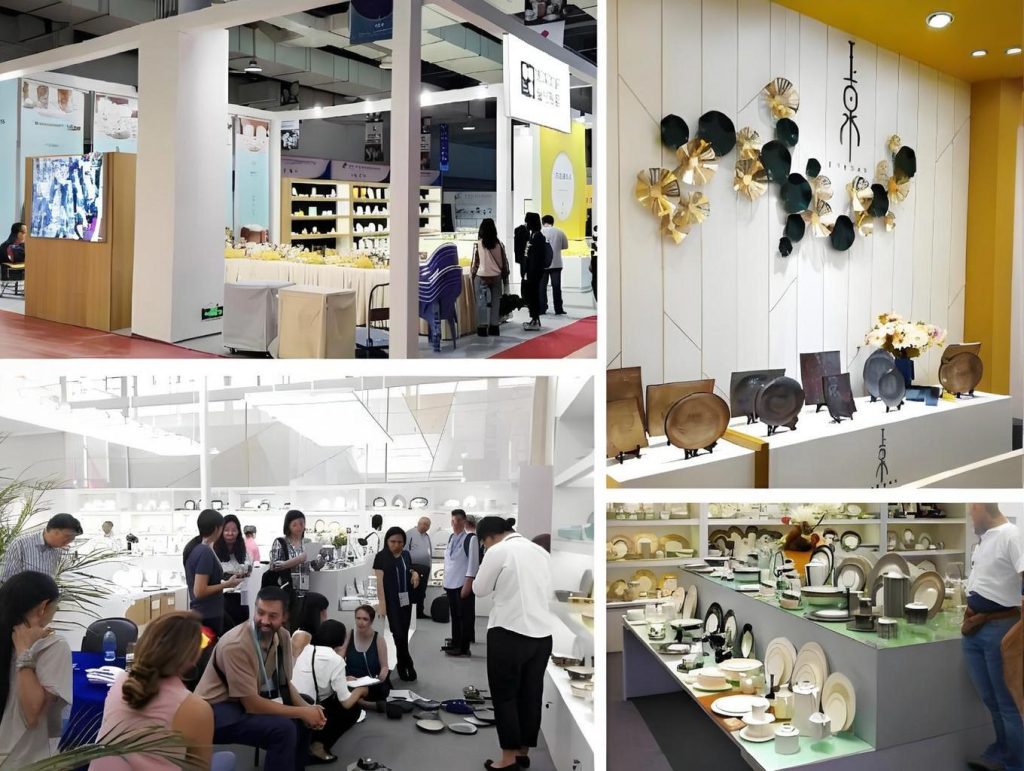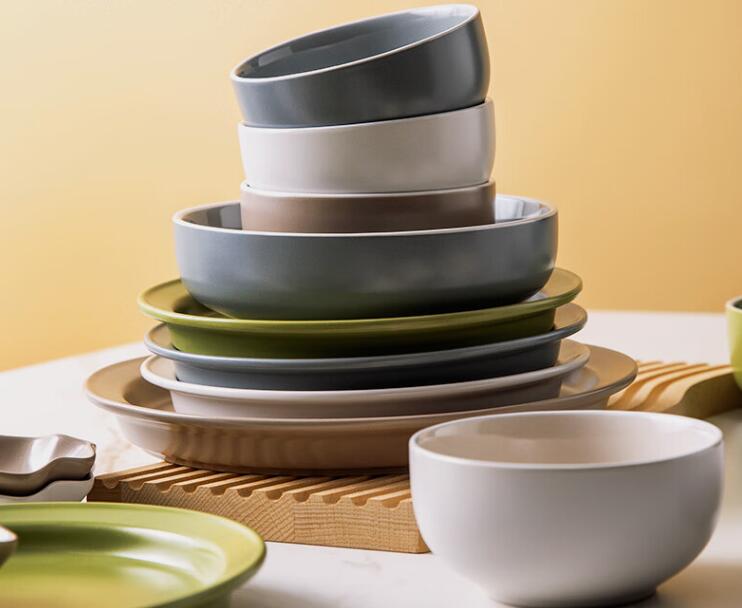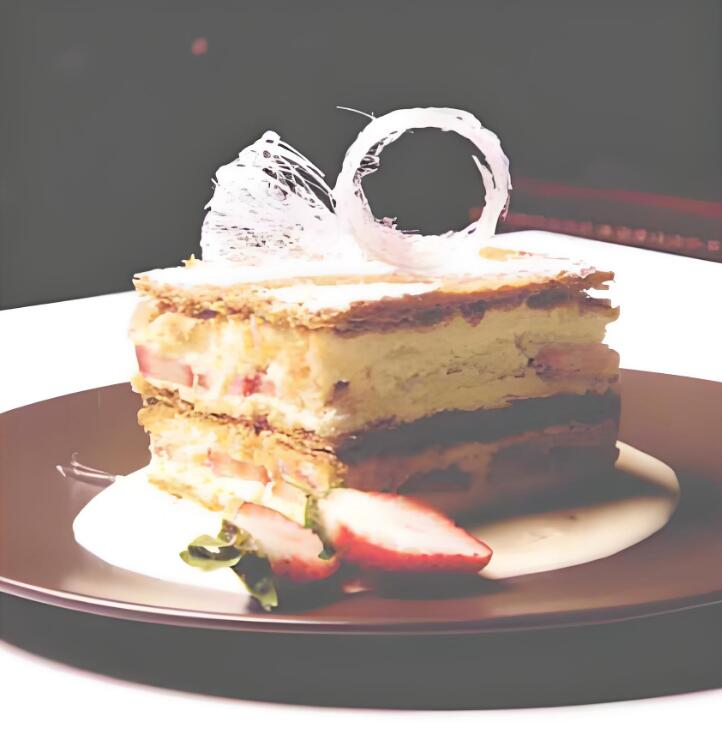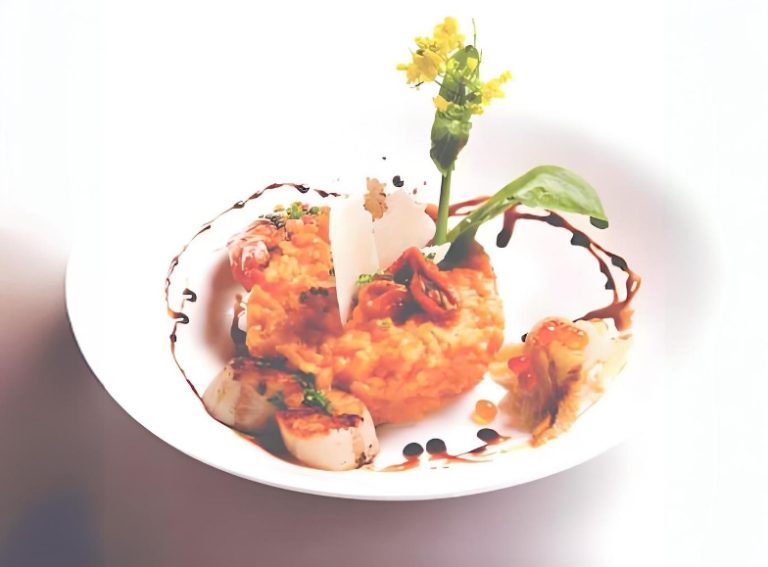Guide to Elegant Table Setting: Achieve Perfection in Three Steps
Three Steps for Table Setting: Theme, Style, and Color Scheme
Before setting the table, it is essential to decide on a theme, especially when entertaining guests. Simply piling up beautiful tableware won’t genuinely impress anyone; a well-thought-out table setting can showcase your taste and leave a lasting impression on your guests about the dining space and the entire gathering. Therefore, the first step in setting the table is to establish a theme, with style and color being the two basic elements that reflect this theme.
Basic Steps
- Determine the Theme: The theme of a table setting is generally based on the occasion, such as Valentine’s Day, Christmas, etc. It can also be for casual dinners, friends’ gatherings, birthday parties, or even a solo breakfast or weekend meal. There are no limits to the choices.
- Decide the Style: Once the theme is set, the style should be determined based on the composition of the guests or the preferences of family members. For example, a Christmas table setting for a casual friends’ gathering can have a more relaxed style. However, if entertaining colleagues or bosses, the setting should reflect a sense of business and sophistication, with more attention to the arrangement of tableware.
- Choose the Main Color Scheme: The main color scheme is closely related to the style. When determining the main color scheme, consider the harmonious color matching of the table items and ensure it doesn’t clash with the overall space. If the room’s color scheme is simple, there’s more freedom to play with, focusing on the style’s color scheme and adding some holiday-specific colors to complete the table setting effortlessly. If the room’s color scheme is rich, it’s best to simplify the table colors or find colors that resonate with the overall space to a certain extent.
Style
When setting up a dining table, once the basic style is determined, everything becomes simple and clear. The more common dining table styles nowadays include elegant, romantic, classical, casual, natural, and minimalist styles. However, these styles are not rigid and can be mixed and matched, such as combining romantic and elegant styles or casual and natural styles. There are also other styles to consider, like a Gothic-themed Halloween table or a cute, girly style for a birthday party.
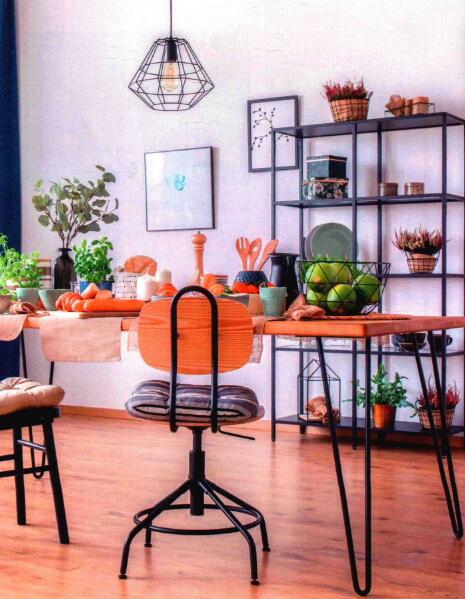
- Elegant Style
The simplest way to achieve an elegant style is by choosing silver cutlery and keeping the overall color scheme minimal, with light gray and beige being the most suitable.

- Romantic Style
A romantic style often uses clear, soft pinks or blues to highlight the main color. The color scheme should be unified, and floral decorations are essential.

- Classical Style
The traditional English style conveys a sense of richness, often featuring dark tones such as burgundy, dark purple, and black, complemented by gold-rimmed cutlery to emphasize quality.
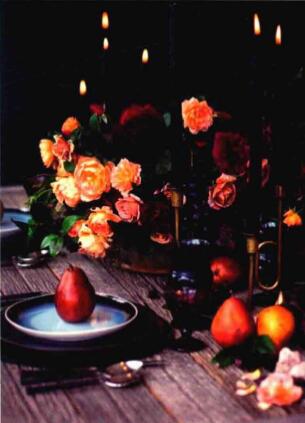
- Natural Style
The color scheme can draw inspiration from nature, with green, brown, and ivory being the most common. Decorations can include natural elements like branches and flowers to highlight the theme.
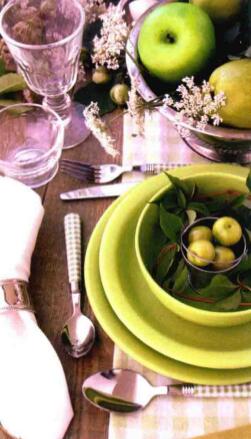
- Casual Style
The casual style allows for more color variety, but the main colors should be bright and vivid, giving a relaxed and vibrant feeling.
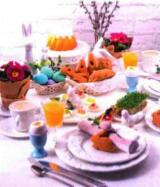
- Minimalist Style
The color scheme is mainly black and white, with accents of other bright colors in a 9:1 or 8:2 ratio, creating a balanced and simple dining table.
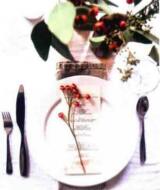
Color Matching
When setting the color scheme for a dining table, you can use various methods such as harmonious color matching, emphasizing a primary color, contrasting colors, and multi-color combinations.
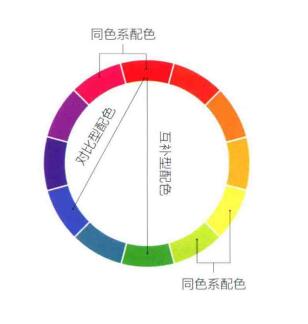
Harmonious Color Matching: The most common color combination is using shades from the same color family, which involves pairing colors of different saturation and brightness within the same hue. To avoid monotony, you can also incorporate patterns in different tableware.
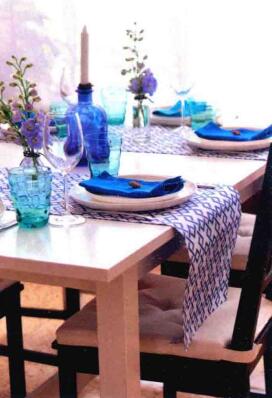
Contrasting Colors: Complementary color matching is a type of contrasting color pairing. Due to the significant difference in hues, this method creates a strong visual impact, leaving a lasting impression and creating a lively and luxurious dining atmosphere. For best results, set both contrasting colors to high saturation; this enhances the distinct features of each color.
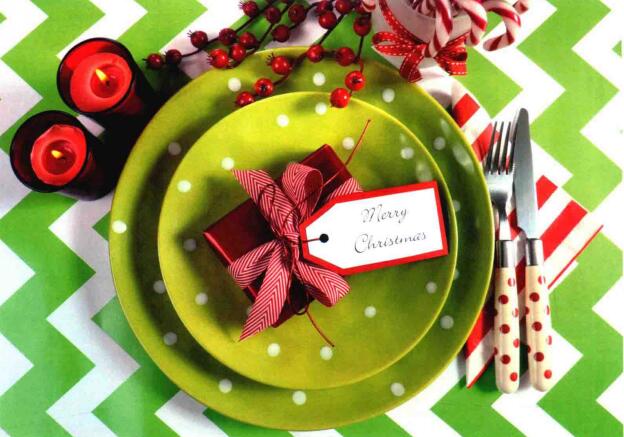
Comparative Color Matching: This creates a dining atmosphere similar to contrasting color pairing but with reduced conflict and contrast, providing a sense of both opposition and balance. For example, pairing red with blue catches the eye but is less intense compared to red and green.

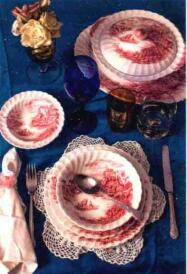
Similar Color Matching: This is another type of harmonious color pairing. For instance, combining red with yellow is richer than using shades of red alone. This color scheme isn’t overly vibrant but offers depth. When using similar colors, control the proportions carefully; it’s better to use one color as the main tone and the other for accents, which enhances harmony and emphasizes the primary color.
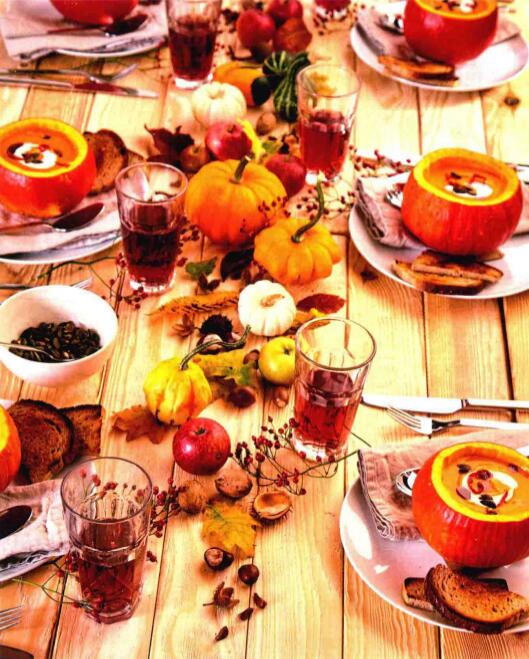
Multi-Color Combinations: Using multiple colors for the dining table can create an open and festive atmosphere, ideal for children’s birthdays or friends’ gatherings. You can choose a brightly colored tablecloth to draw attention, with plates and decorations in colors found within the tablecloth or in light shades like white or gray. Avoid using a chaotic mix of colors.
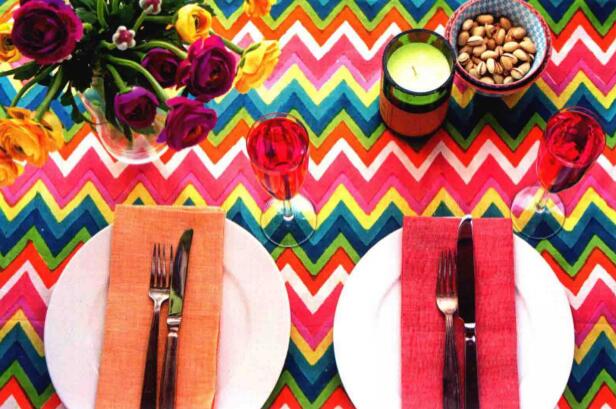
Three Principles to Follow for Table Setting
A beautiful table setting is not a matter of random arrangement but follows certain rules to ensure harmony among the tablecloth, dinnerware, decorations, and more. Specifically, table setting can be approached from three main principles: aesthetics, moderation, and user-centric design.
Aesthetic Principle
The aesthetic principle emphasizes the beauty of rhythm and harmony, variety and unity, symmetry and balance. For example, placing a floral arrangement in the center of a rectangular table, flanked by two matching candleholders at equal distances, can create a visually balanced and stable effect. Additionally, if there is no dominant visual centerpiece among the table decorations, and you have many small items, you can use the principles of rhythm and harmony. Grouping items in sets of two or three and varying the distances between them can break monotony and avoid a bland appearance.
Moderation Principle
If there are too few decorations on the table, it lacks visual appeal and impact, making it seem dull. Conversely, too many or overly complex decorations can cause visual fatigue and detract from the overall theme. Therefore, maintaining moderation ensures a pleasing table setting. Moreover, while creating visual beauty, table decorations should not interfere with dining activities.
User-Centric Principle
The purpose of table setting is to enhance the user’s experience, so convenience should be the primary consideration in the arrangement process. For instance, consider ergonomics; the typical dining activity space is about 76 cm by 45 cm, which dictates the appropriate distance between plates. Additionally, choosing suitable decorations based on the type of guests can create a comfortable dining environment, achieving the ultimate goal of making the guests feel at ease.
| Tips | Source |
|---|---|
| When setting the table, utensils should be arranged in the order of use from the outside in. | Emily Post |
| The napkin should be placed on the left side of the plate, either folded or rolled. | Fine Dining Lovers |
| A formal table setting requires a salad plate, soup bowl, bread plate, and butter knife, among other items. | Martha Stewart |
| In table settings, the water glass should be placed above the knife, with the white wine glass to the right and the red wine glass slightly above and to the right. | Fine Dining Lovers |
| The number of utensils in a formal table setting should not exceed 12 pieces to avoid making guests feel uncomfortable. | Martha Stewart |
| Table setting originated in the 18th century and reached its peak during the Victorian era when each place setting had about 20 pieces of cutlery. | Kiddle Encyclopedia |
| The knife blade should face the center of the plate as a gesture of friendliness and politeness. | Emily Post |
| When setting the table, utensils should be kept clean, wiped with a soft cloth, and ideally sterilized with steam. | Fine Dining Lovers |
| In informal table settings, the napkin can be placed in the wine glass as a decoration. | Kiddle Encyclopedia |
| The cutlery used in a formal table setting should match what is actually used during the meal, and there should be no extra utensils. | Emily Post |
Whitespace: An Advanced Artistic Expression
Whitespace is an aesthetic concept that emphasizes the design principle of ‘less is more,’ creating a striking artistic effect through simplicity. This ‘less’ does not mean emptiness but rather a pursuit of simplicity and ease, allowing more room for thought and imagination. In dining table design, whitespace can enhance beauty and optimize practicality.
The Transparent Beauty of a Bare Table
When designing a dining table with whitespace, don’t rush to consider what kind of tableware and decorations to use. Instead, start by analyzing the inherent qualities of the existing table. If the table is made of raw wood or has a clean matte finish and the setting is not for a formal business dinner, you can skip the tablecloth. Play with the colors between the tableware and the natural table surface to create a minimalist visual effect.
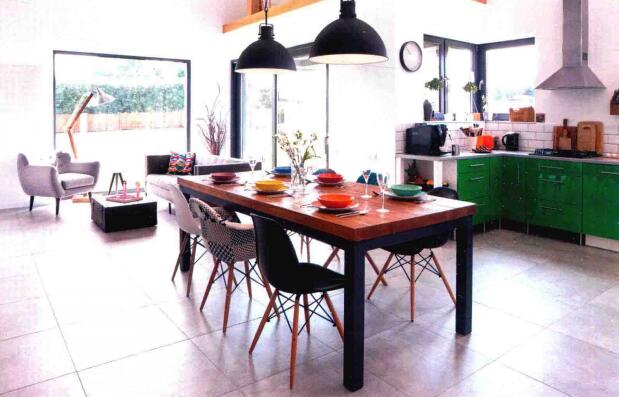
White plates bring a breath of fresh air to your dining table.
White plates easily create a clean and elegant visual effect. No matter how many different styles of tableware are in your cupboard, the most versatile is always the white plate. It suits almost any dining table setting and can be paired with various dishes at will. Whether it’s a sumptuous Chinese meal or a delicate Western course, the simple white plate is a perfect match, exuding quiet beauty. If you want to pursue a low-key yet sophisticated table arrangement, you can also choose white plates with detailed designs, such as those with gold edges or embossed patterns. They possess all the advantages of white plates while showcasing an exquisite taste that stands out.

Table Setting for Different Occasions
The art of leaving space on a dining table involves using an appropriate amount of tableware and decorations to convey a sense of sophistication. For a solitary breakfast, a glass of freshly squeezed juice in a clear glass, a steaming croissant on a white plate, and a quietly arranged bouquet create a serene, undisturbed world. For a small gathering of friends, it’s best to create a central visual focus, achieving a balanced arrangement of items on the table. Each guest should have enough personal space to enjoy their meal comfortably, with a small area left for placing phones to capture the aesthetic appeal of the table.
For formal occasions, table settings are typically symmetrical and orderly, with properly matched tableware.
For informal occasions, tableware can be arranged diagonally to showcase a relaxed and casual vibe; bowls and cutlery can be placed in a crisscross pattern, slightly offset, to create a lively and dynamic atmosphere.
Plating Techniques
Just as table settings require the right amount of space to convey elegance, the food on the plates should also be arranged with mindful spacing to complement the simplicity of the table setup.
Western cuisine, often served in individual portions, naturally lends itself to this design. Larger white plates can be used to combine ingredients of different colors, with sauces artfully drizzled to create a garden-like visual. Alternatively, placing the food on one side of the plate while leaving the other side empty can highlight the dish’s refinement.
Chinese cuisine, on the other hand, frequently involves combining multiple ingredients, leading to larger portions. Piling all the food onto the plate can create a crowded look that detracts from the quality. Instead, consider arranging the food in a small mound in the center of the plate, leaving the surrounding area clear to emphasize the dish itself. This technique doesn’t necessarily require white plates; the color and shape of the plate can also be used to enhance the presentation, making fragmented dishes appear cohesive.
If you have any questions or need to custom dinnerware service, please contact our Email:info@gcporcelain.com for the most thoughtful support!

